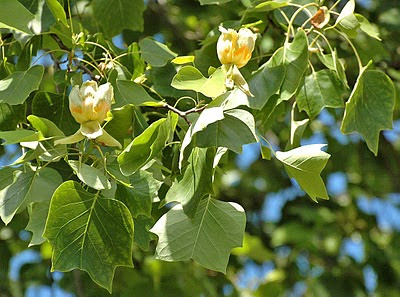Yes, it is a wood anemone Anemone nemorosa, but not as we know it Jim (as Mr. Spock on StarTrek might have remarked if he'd landed on a distant planet and found this growing on an alien woodland floor). It's a mutant, where a mutation in one of the genes that controls the formation of the whorls of floral structures has converted all of the ovaries, that would eventually contain the seeds, into petal-like structures. With its seed production disabled, it can only reproduce vegetatively via its underground rhizome and since that grows very slowly this isn't a plant that's often found in garden centres. It's been growing in my garden for about a decade and has formed a patch with about 20 flowers that's only about 30cm. in diameter.
Compare the wild-type wood anemone above with the mutant below and you'll see the scale of the floral derangement. Gardeners (and I'm no exception) have always been fascinated by rare mutant forms of wild flowers that occasionally turn up - some are even described in John Gerard's Herbal of 1597, which lists, amongst others, the childling daisy.
These days geneticists deliberately produced floral mutants like this, using chemical mutagens, to identify the genes that are involved in floral development, using the little weed known as thale cress Arabidopsis thaliana, which grows conveniently quickly in the laboratory but was definitely at the back of the queue when the genes for aethetic appeal were handed out.



























